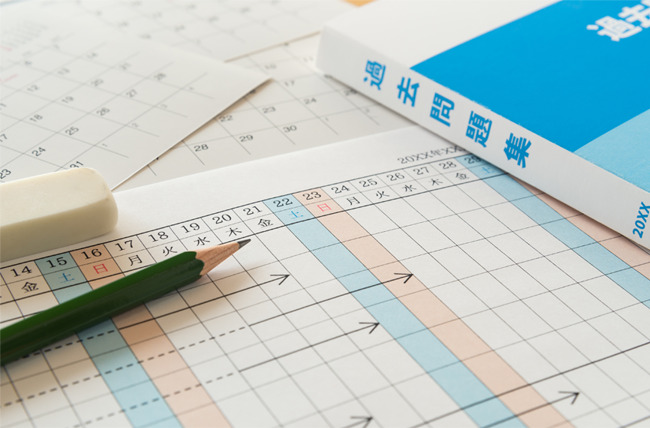Looking at the total number of applicants for the second-stage exam at national and public universities on the last day of application, it looks like it will be on par with last year.According to the data of the Ministry of Education, Culture, Sports, Science and Technology, the 18-year-old population will decrease from 2021 million to 2022 million from 114 to 112, and will further decrease to 2023 million by the 110 entrance examination.As a result, the number of applicants and examinees for the university entrance exam held in January has decreased from last year.It is surprising that the number of applicants has remained at the same level as the previous year, even under these circumstances.Some universities have started to have a fixed number of applicants, and the overall picture has become visible to some extent.

Maintaining the same number of applicants as in the previous year even during the period when the 18-year-old population is declining
The number of applicants for the second exam at national and public universities is about 21 in the first half, which is almost the same number as last year, according to the tally on the last day of application.According to the data of the Ministry of Education, Culture, Sports, Science and Technology, the 18-year-old population in the 2023 entrance examination will decrease by 20 people from the previous year, or a decrease of 20%.Maintaining 2013 people even in such an environment seems to represent "Uchida and Suzuki's magical number of XNUMX people" (Uchida and Suzuki, XNUMX).
This magical number of 20 means that applicants to national and public universities are composed of a certain core group of applicants, and are stable and unaffected by changes in the population or the number of test takers. The numbers are based on the results of research that the test taker class has been formed, and it seems that this trend is continuing even now.
By the way, there are several sites that publish the application status of private universities, but here, we will look at the total as of February 10 published on Kawaijuku's university entrance examination information site, Kei-Net. . Kei-Net publishes statistics by university group and faculty system, so it's very easy to understand overall trends.The total number of universities is 101, so it may look like a small number, but the total number of applicants at this stage is about XNUMX% of the total number of general selection applicants for all private universities at the end of last year.
Therefore, the results can be considered to be highly reliable.According to this tally, it can be seen that the number of applicants for the general selection of private universities for the 2023 entrance examination is 98% compared to the previous year, which is the same level as last year.The general method is 98%, and the common test method is 100%, indicating that the common test method is steadily attracting applicants.
Kawaijuku University entrance examination information site Kei-Net
2023 Entrance Examination Information
https://www.keinet.ne.jp/exam/future/
Psychology and sports science are popular, but life science is declining
Looking at the statistics by department, the number of applicants for psychology has increased significantly.The psychology field has always been popular to some extent, but the growth in the number of applicants is thought to be influenced by the fact that the number of new faculties and departments is increasing.The official psychologist exam was implemented as a national qualification in 2018, but since then, the number of graduate schools that support the official psychologist has increased at universities across the country.
Partly because of this, even at the undergraduate level, there have been moves in recent years to reorganize psychology departments into faculties or to establish new faculties. The Department of Psychology will be newly established at Ryukoku University for the 2023 entrance examination, but at the current stage it has attracted more than 3,000 applicants.Also, Ritsumeikan University (Comprehensive Psychology) has introduced a new entrance examination system, although it is not a new one, and the number of applicants is increasing.These trends are leading to an increase in the number of applicants for psychology disciplines as a whole.
The number of applicants for the sports science field is also increasing.This increase in the number of applicants is greatly influenced by the establishment of faculties at Rikkyo University (Sports Wellness) and Toyo University (Health and Sports Science).At this stage, both faculties have attracted more than 4,000 applicants.The establishment of new faculties at both universities appears to have implications for the entire sports science lineage.In the Kinki region, the number of applicants to Doshisha University (Sports and Health Science) and Ritsumeikan University (Sports and Health Science) is increasing.Also, in the Tokyo metropolitan area, the number of applicants to Daito Bunka University (Sports and Health Sciences) has increased from last year.It can be seen that the introduction of a new method in the common test usage method has also had an effect.
In contrast to these faculties that are doing well, life sciences is facing a tougher situation.At this stage, nearly XNUMX people have decreased from last year.Since most of the applicants for life sciences are from undergraduate departments in the field of nutrition, it can be said that nutrition is not popular.The trend of unpopularity of the nutritional system was clearly shown in the mock test conducted last year, so the number of declines is more than expected, even though it is an expected trend.
Looking at university groups, Sekiseki universities are doing well, women's universities are generally headwinds
Looking at the statistics by university group, "Sekiseki Doritsu" is doing well.At Doshisha University, Ritsumeikan University, and Kwansei Gakuin University, both the general method and the common test method increased from the previous year.At Kansai University, the general method has fallen below last year, but the standardized test method has increased from last year.
Common test usage is increasing in other groups as well. As for Waseda University and March, the general method is decreasing, but the common test method is increasing. Waseda University (Education) newly introduced a common test system, and Sophia University also implemented a new common test system for 14 subjects, attracting a large number of applicants. .Sophia University's common test usage method announces the results on February XNUMX (Tuesday). I can guess.
Chuo University, Hosei University, Meiji University, and Rikkyo University are increasingly adopting the common test method for March, and Meiji University and Chuo University are also increasing the use of the general method.At Chuo University, the number of applicants is also increasing for faculties other than the Faculty of Law, which has moved to the city center.
On the other hand, there is a severe application situation at "Metropolitan Women's University".However, not only in the Tokyo metropolitan area, women's universities generally have a tough application situation.As mentioned above, the unpopularity of the nutritional system is also greatly affected.Therefore, rather than the unpopularity of women's universities, it would be better to say that the unpopularity of the undergraduate system has a direct impact.Gakushuin Women's University, Kyoritsu Women's University, Showa Women's University, and Seisen Women's University have seen an increase in the number of applicants.

Even if the 18-year-old population decreases, the actual number of university applicants is increasing
In the media such as newspapers, there are articles about university survival due to the decline in the 18-year-old population, but looking at the application status for the 2023 entrance examination, at present, both national and public universities and private universities are applying It is not the situation that the number of people decreases greatly.
In fact, according to the 12 School Basic Survey (final value) announced by the Ministry of Education, Culture, Sports, Science and Technology in December last year, the university enrollment rate has increased by 2022 points to 1.7%, the highest ever.Furthermore, the number of university enrollments increased by 56.6 from the previous year to 63. In 5,156, although the population of 8,116-year-olds decreased by 2022 from the previous year, the number of students enrolled in universities increased.Breaking down the increase in the number of students by establishment, 18 were enrolled at national universities, 315 at public universities, and 712 at private universities, showing an increase in enrollment at private universities.By gender, there are 7,089 males and 3,339 females.Female students at private universities are increasing in number.
The declining birth rate is said to be faster than expected, but even if the population of 18-year-olds declines, if the rate of applying for university increases, it will be possible to compensate for the population decline to some extent.However, there may be regional differences in this.As a result, the forecast may be limited to universities in urban areas, but it is possible that a real financial crisis will occur for universities in the future.
